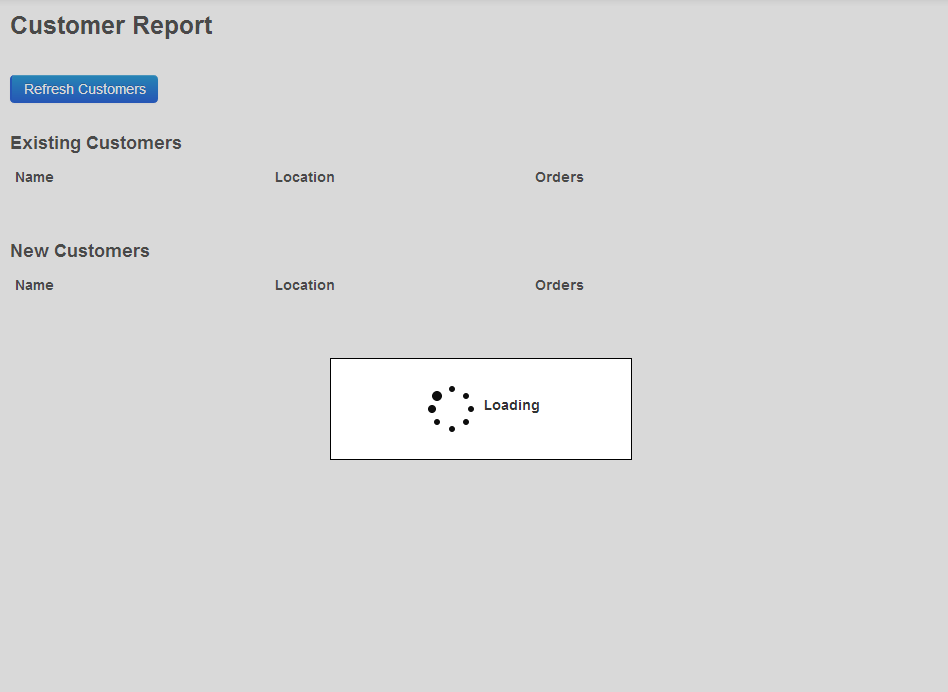AngularOverlay Directive
The AngularOverlay directive intercepts $http and jQuery XHR calls and displays and overlay. To get started using it follows these steps:
- Add the directive script located in app/directives/wcAngularOverlay.js into your project and reference the wc.Directives module:
- Reference the wc.Directives module:
angular.module('customersApp', ['ngRoute', 'wc.Directives']);- Add the following styles into a CSS stylesheet (tweak as needed):
.overlayContainer { display: none;}
.overlayBackground { top:0px; left:0px; padding-left:100px;position:absolute;z-index:1000;height:100%;width:100%;background-color:#808080;opacity:0.3;}
.overlayContent { position:absolute; border: 1px solid #000; background-color:#fff;font-weight: bold;height: 100px;width: 300px;z-index:1000;text-align:center;}- Add the directive into your main shell page:
<div wc-overlay wc-overlay-delay="300">
Loading message or HTML content (such as an image) goes here
</div>Once you have the code locally, install Node.js, open a command-prompt and run:
node server.js
Then navigate to http://localhost:9000 in your browser to test out the project code and see the AngularOverlay directive in action.
Note: This directive was created for a prototype project and has only been tested with Chrome and IE10+. It's intended to provide a starting point, evolve over time (please contribute!), and hopefully save someone some time.
